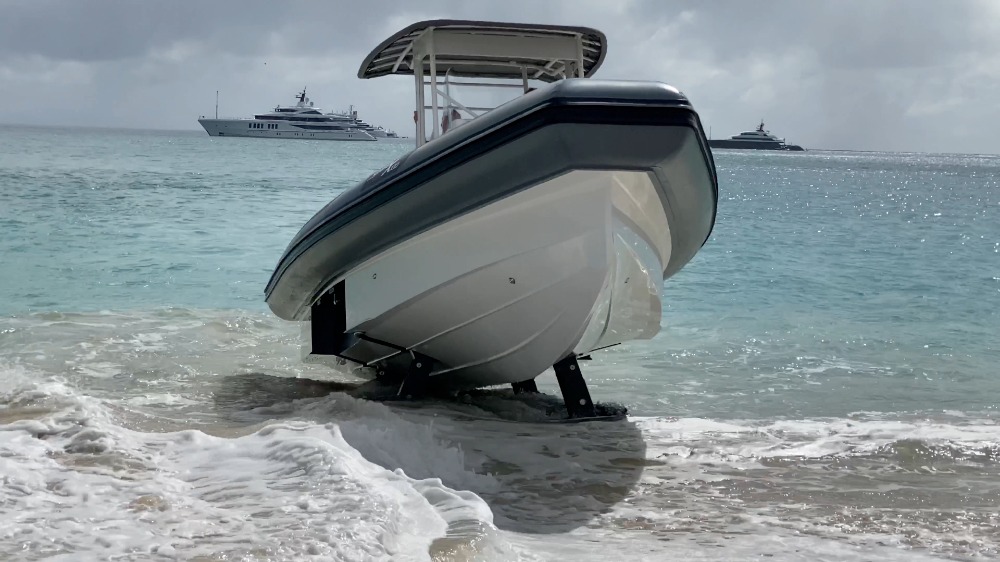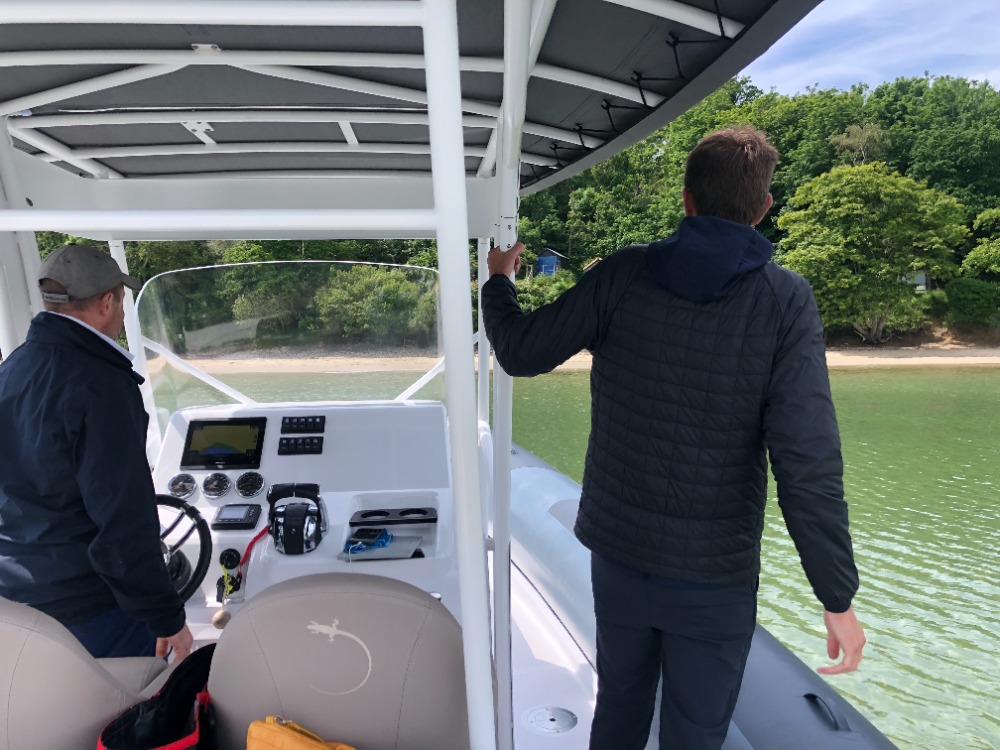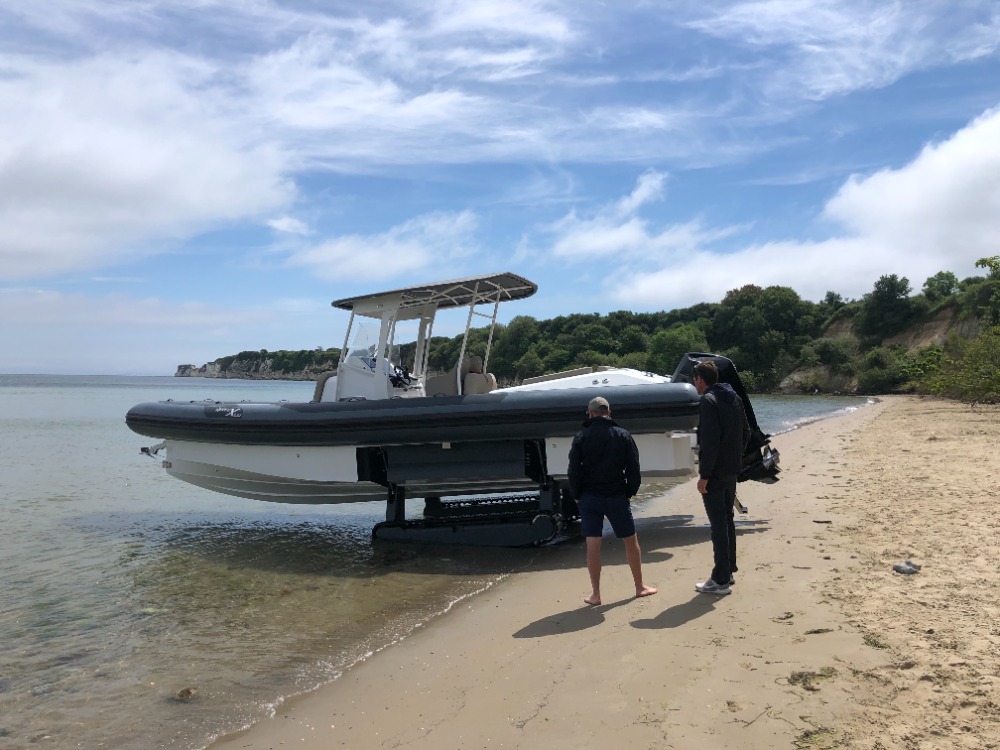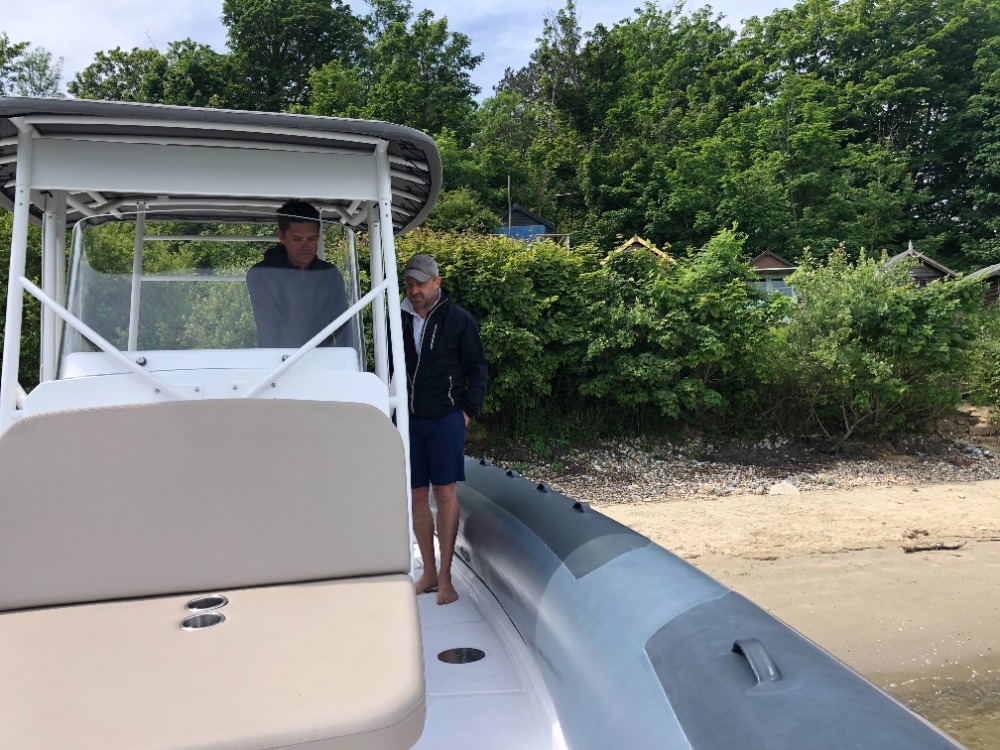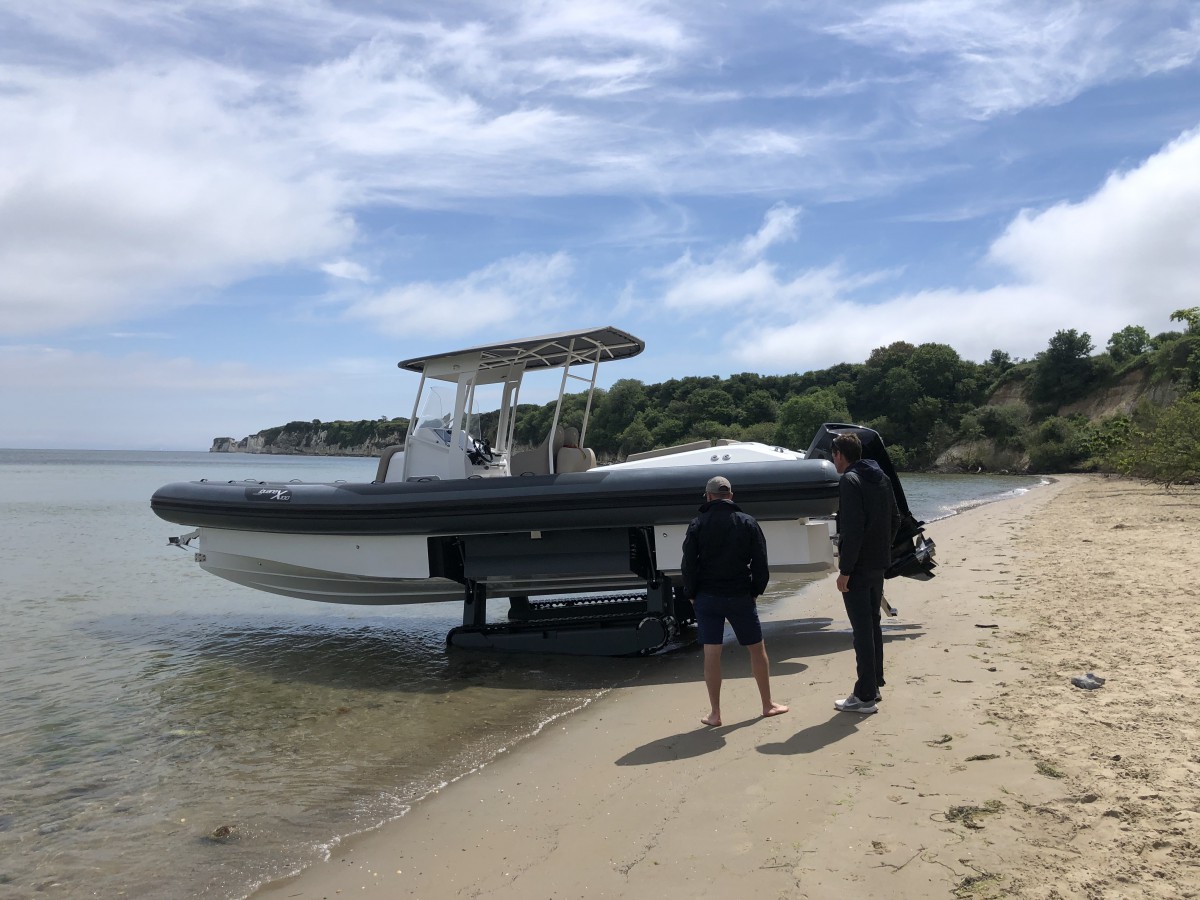A day out on the Iguana X100
An assessment of the amphibious boat from a superyacht perspective…
On a sunny morning in Poole, amphibious boat builder Iguana Yachts invited SuperyachtNews.com to test drive its all-terrain RIB, the Iguana X100. Needless to say, they didn’t need to do much persuading – Iguana boats are impressive bits of kit that feature futuristic tread-like tracks, allowing them to cross a variety of terrain ashore, including sand, rocks and concrete.
The trip started in the car park of Salterns Marina in Poole, where Toby Scruby, consultant at Iguana Yachts, drove the X100 down the steep slipway and into the water (a surreal sensation). “The trick is to keep the momentum going as you drive into the water,” Scruby advises, adding that the boat is very easy to handle in and out of the water with a little bit of tuition and practice, with one of the main points being to keep the speed up when driving from shore to sea or vice versa.
It wasn’t long before the boat was floating and the twin 300hp outboards took over from the tracks, which draw 1.2m. As the tracks retracted, we made our way out of Poole Harbour where we were able to really experience the boat’s performance in the water. Unlike other amphibious tenders that typically feature wheels, Iguana’s tracks retract all the way into the hull to create a flush surface. Amphibious tenders are often perceived by the market as compromising on performance, but this is not the case with the Iguana X100 due to the total integration of the tracks into the hull.
As we approached a nearby beach, the tracks were deployed. “You drive the boat forward towards the beach on the engines until the tracks meet the seafloor and take over,” explains Scruby. “As long as the beach is gently shelving, you can keep the tracks down the whole way in.” On a smooth surface, this makes for a smooth transition. The boat’s tracks can also climb 40 per cent inclines.
On the beach is where the X100 really comes into its own and proves just how beneficial it would be as a tender for any superyacht programme.
Iguana offers the option of incorporating cameras on the boat’s legs, so that the driver can see the surface of the seafloor they are driving over on the navigation screen. However, the tracks are very durable and over engineered so that they can handle most terrains – the only surface that might be problematic being mud. This versatility comes down to the strength of the track; with the weight of the vessel spread over a larger surface, it can be driven over places that would be difficult to walk on.
On the beach is where the X100 really comes into its own and proves just how beneficial it would be as a tender for any superyacht programme. Once the tracks are mostly out of the water, Scruby recommends spinning the boat around so that the bow is pointing out to sea and the ladder at the stern is at the water’s edge. This way, the boat does not take up too much space on the beach, but acts as a very stable platform from which guests of a wide range of mobility levels can easily get on and off without touching the water. It’s an impressive sight (or, as one passerby commented, “outrageous”)!
All in all, the X100 felt extremely sturdy both on, and out of, the water – weighing 3.4 tonnes with carbon in the hull, it is a seaworthy boat. Furthermore, when the boat was cruising in the water, it didn’t feel like anything less than a high-performance RIB. The difference, of course, are the tracks, which add a whole new dimension to the RIB experience. From a crew maintenance perspective, Scruby explains that the main point of difference from any other tender would be changing the hydraulic lines on the tracks, which is recommended every two years. Any engineer would be able to do this easily, he says.
The only potential drawback of the X100 and the rest of the Iguana range, which includes limo and sportfisher models, is the fact that they are currently only available in the 9m hull size, meaning that they are only really viable on board 60m-plus superyachts. However, as Scruby reveals, Iguana is looking at developing a 7m model, which would open up it up as an option for the 40-50m superyacht market – an exciting prospect!
Profile links
NEW: Sign up for SuperyachtNewsweek!
Get the latest weekly news, in-depth reports, intelligence, and strategic insights, delivered directly from The Superyacht Group's editors and market analysts.
Stay at the forefront of the superyacht industry with SuperyachtNewsweek
Click here to become part of The Superyacht Group community, and join us in our mission to make this industry accessible to all, and prosperous for the long-term. We are offering access to the superyacht industry’s most comprehensive and longstanding archive of business-critical information, as well as a comprehensive, real-time superyacht fleet database, for just £10 per month, because we are One Industry with One Mission. Sign up here.
Related news
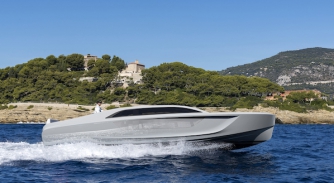
Introducing the new Pascoe 12m Limousine
Pascoe announces its latest design aimed at vessels in the larger segment of the market.
Fleet
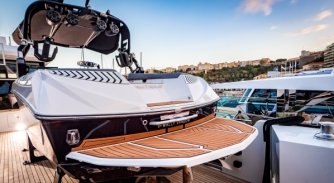
Nautique: a trending superyacht tender
A look at the benefits of the Nautique range for superyachts following the creation of Superyacht Nautique
Technology
.jpg)
Bespoke rescue tenders with a Ribeye touch
Tender manufacturer Ribeye offers insight into its range of fully compliant, adaptable SOLAS rescue tenders.
Fleet

The evolution of the electric superyacht tender
A market that remains both innovative and competitive
Technology
Related news
Introducing the new Pascoe 12m Limousine
4 years ago
Nautique: a trending superyacht tender
4 years ago
Bespoke rescue tenders with a Ribeye touch
4 years ago
The evolution of the electric superyacht tender
5 years ago
NEW: Sign up for
SuperyachtNewsweek!
Get the latest weekly news, in-depth reports, intelligence, and strategic insights, delivered directly from The Superyacht Group's editors and market analysts.
Stay at the forefront of the superyacht industry with SuperyachtNewsweek


